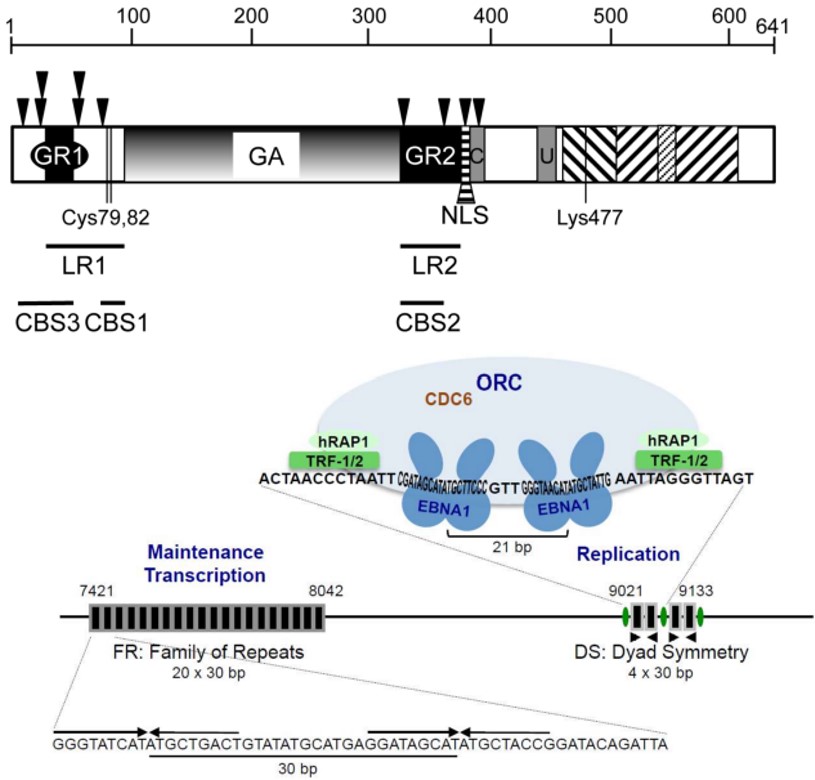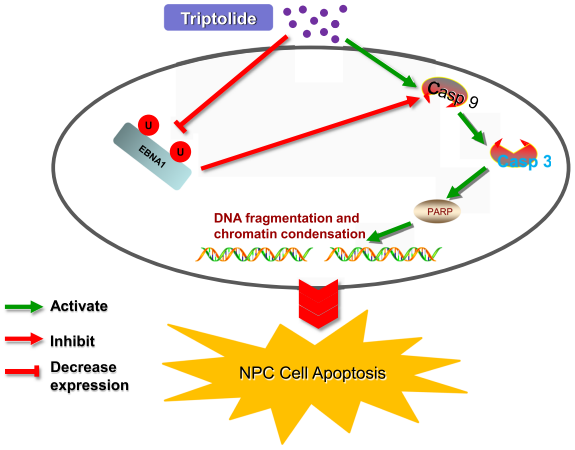NAA Services for Anti-EBNA-1 Antibody
Nasopharyngeal carcinoma (NPC) is a malignancy derived from the epithelial cells of the nasopharynx cavity and is closely associated with Epstein-Barr virus (EBV) infection. With integrated natural autoantibody (NAA) research and engineering techniques, Creative Biolabs provides high-quality services against anti-Epstein-Barr nuclear antigen 1 (EBNA-1), with low cross-reactivity and good sensitivity.
Background of EBNA-1
EBV is one of the most common human herpesviruses with a high prevalence all over the world. EBV infection is associated with various human proliferative diseases including NPC, gastric and lymphoepithelioma-like carcinomas. EBNA-1 is an indispensable protein for the replication, partition, transcription, and maintenance of viral genomes, which also is the only viral protein expressed in all three forms of latent EBV infections. Increasing evidence has demonstrated that EBNA-1 may be essential for the proliferation of tumor cells as well as an attractive target for therapeutic strategies. In addition, the antibody specifically against EBNA-1 is mainly produced in the periphery and innate immune responses preferentially in the central nervous system (CNS). Levels of EBNA-1 and anti-EBNA-1 may be indicators for some disorders, such as multiple sclerosis (MS) and NCP.
 Fig.1 Structural basis of EBNA1 (up) and EBV oriP (down).1
Fig.1 Structural basis of EBNA1 (up) and EBV oriP (down).1
The Role of Anti-EBNA-1 Antibody in Nasopharyngeal Carcinoma
NPC is the most common cancer arising from the epithelium of the nasopharynx, which locates behind the nose and above the back of the throat. In fact, NPC is a rare type of tumor caused by a combination of factors, such as viral, environmental influences, and heredity, among which the viral influence is closely associated with EBV infection. NPC generally is classified into three subtypes: type I, type II, and type III according to microstructural characteristics of the tumor cells. Both type II and type III NPCs exhibit EBV-positive. It was reported that the expression of viral EBNA-1 is one of the characteristics of type II latency infection.
Cellular immunity is essential for controlling EBV infection, but the humoral immune response is also activated during EBV infection. EBNA-1 IgG antibodies are produced during the infection and have lifelong persistence. Besides, EBNA-1 protein contains a glycine-alanine (Gly-Ala) repeat region that was found as a dominant IgA antigen epitope for instance in patients with NPC. Thus, anti-EBNA-1 antibody, especially IgA isotype, might serve as an indirect biomarker in NPC diagnosis.
 Fig.2 The role of EBNA1 in EBV-positive NPC cells.2
Fig.2 The role of EBNA1 in EBV-positive NPC cells.2
Features of Our Anti-EBNA-1 Services Including but Not Limited to:
Equipped with our well-established platforms and experienced scientists, Creative Biolabs provides our global customers with comprehensive NAA products and NAA services, from NAA detection, NAA profiling, to NAA epitope mapping.
- Fast turnaround time and competitive pricing
- Personalized and comprehensive services
- One-stop pipeline
- High efficiency
Anti-EBNA-1 detection could serve as a good supplement to the pathological diagnosis of NPC. As the undisrupted global leader in the disease diagnosis, Creative Biolabs has successfully finished lots of NAA projects against various disease biomarkers for our clients all over the world. We are therefore confident in offering the best service against anti-EBNA-1 for NPC. If you are interested in our service, please do not hesitate to contact us for more details.
References
- Wilson, Joanna B., et al. "EBNA1: oncogenic activity, immune evasion and biochemical functions provide targets for novel therapeutic strategies against Epstein-Barr virus-associated cancers." Cancers 10.4 (2018): 109.
- Zhou, Heng, et al. "Triptolide inhibits Epstein-Barr nuclear antigen 1 expression by increasing sensitivity of mitochondria apoptosis of nasopharyngeal carcinoma cells." Journal of Experimental & Clinical Cancer Research 37 (2018): 1-17.
Related Services:
- NAA Services for Anti-MAGE
- NAA Services for Anti-Fibronectin Antibody
- NAA Services for Anti-CD44 Antibody
- NAA Services for Anti-BMI-1 Antibody
- NAA Services for Anti-NY-ESO-1 Antibody
- NAA Services for Anti-PRDX2/3 Antibody

